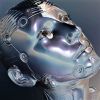Business Transformation Requires Transformational Leaders
Leadership and teaming skills are front and center in times of rapid change. Meet today’s constant disruption head on with expert guidance in leadership, business strategy, transformation, and innovation. Whether the disruption du jour is a digitally-driven upending of traditional business models, the pandemic-driven end to business as usual, or the change-driven challenge of staffing that meets your transformation plans — you’ll be prepared with cutting edge techniques and expert knowledge that enable strategic leadership.
Subscribe to Arthur D. Little's Culture & Leadership Newsletter
Insight
This issue of Cutter Business Technology Journal (CBTJ) continues the conversation we began in our last CBTJ and focuses on blockchain technology adoption beyond cryptocurrencies and financial services. The authors explore areas such as energy and utilities and government and present real examples of successful DLT implementations. They share their practical experiences in overcoming and addressing some of the known issues with blockchain projects.
As has been our tradition for the last several years, we’ve compiled the five most intriguing articles published by the Business Agility & Software Engineering Excellence practice for today’s Advisor. How did we come up with this list? We chose the articles that garnered the most feedback from Cutter Members. Your questions and comments not only make it possible to create lists like this, they help focus Cutter’s Senior Consultants’ research on the areas that are most important to organizations like yours. So please keep your feedback coming.
We’ve compiled the five most intriguing articles published by Business Technology & Digital Transformation Strategies in 2019 for today’s Advisor.
As has been our tradition for the last several years, we’ve compiled the five most intriguing articles published by the Cutter Business Technology Journal this year for today’s Advisor. How did we come up with this list? We chose the articles that garnered the most feedback from Cutter Members and clients and those that created controversy among Cutter Senior Consultants and Fellows.
In this Cutter Business Technology Journal (CBTJ), we take a broad look at the opportunities and disruptions that blockchain creates. Our authors explore reasons why blockchain application is still slow regardless of overall interest in the technology. Enterprises are still struggling to find a blockchain that fits their needs, especially from a scaling perspective. A key observation from these articles is that regulation and compliance can help drive blockchain technology adoption. Blockchain (and related use cases such as cryptocurrency and digital assets) is currently subject to very limited regulation. In this issue, the authors provide researchers and practitioners with an overall view of the current state of blockchain adoption and what industry participants perceive as its challenges. They present real-world examples of DLT implementations and demonstrate how this new technology can deliver new value.
This Advisor explores three major disciplines that “Good to great” organizations follow to govern their portfolio and examines practices that enable organizations to keep the digital train moving with minimal friction, cost, and effort.
This edition of The Cutter Edge explores the social, economic, privacy, and ethical issues associated with AI adoption; how the cognitive enterprise offers a business-driven vision for organizations, and more!
This article focuses on how new regulations in the financial services industry and innovative technologies enhance customer experience (CX) by making services more efficient, faster, and less expensive. The authors describe new directives — such as the second Payment Services Directive (PSD2), applicable across the European Economic Area — that, together with new technologies such as blockchain, present a window of opportunity for financial services providers. The authors highlight how service providers, armed with information about target customers and with reduced risk of exposure to fraud, can better serve consumers. The authors also show how leveraging blockchain technology and the PSD2 directive can help deliver better CX and value proposition in the financial services industry.














